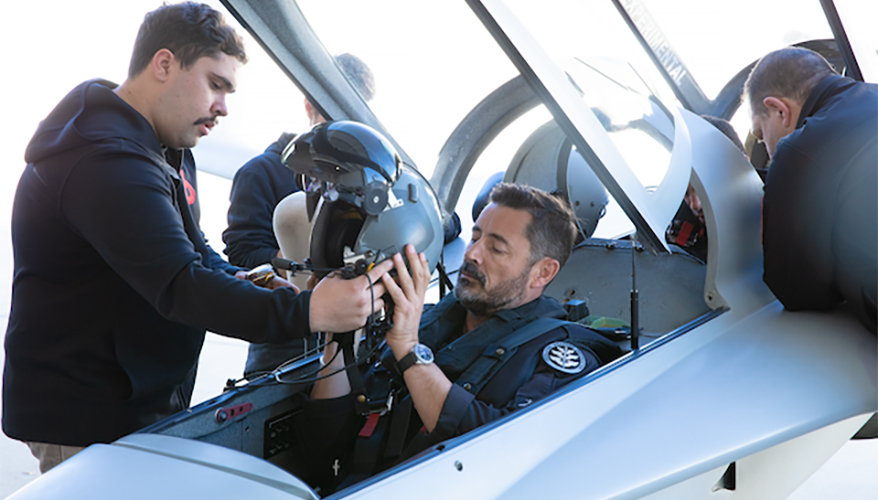GLOBAL DEFENSE MARKET
SINGAPORE AIRSHOW: Startup's Augmented Reality for Jet Fighters Catches International Eyes
By Meredith Roaten

Red 6 photo
SINGAPORE — A new technology that trains pilots against adversaries using augmented reality is sparking interest from countries around the world, according to its creator.
Florida-based startup Red 6 brought its advanced tactical augmented reality system, also known as ATARs, to the Singapore Airshow after the company responded to multiple requests for proposals from international customers, said Daniel Robinson, CEO and founder of the startup.
The technology projects an adversary into a pilot’s field of vision during flight, allowing a less expensive alternative to exercises like dog fights but more realistic than a virtual reality trainer on the ground, he said.
“We don't have any pilots. We don't have any airplanes. We don't have the dollars to solve that problem,” he said. “But even if we did, it's becoming increasingly difficult to simulate peer adversaries,” as their capabilities become more advanced.
The company has responded to requests for proposals published by several international customers, but Robinson declined to name them.
High training costs and limits on virtual reality are not unique problems to the U.S. military, he said. European and Middle Eastern customers as well as Singapore have seen the technology at the airshow, Robinson said.
“All of them when they see this, the light bulb moment goes off immediately because they all have exactly the same problems,” he said.
The company is integrating the system onto Northrop Grumman’s T-38 Talon jet trainer, but the technology will be able to integrate with any system, he said. Red 6 was recently awarded additional funding from the Air Force’s small business innovation research, or SBIR, supplemental funding pilot program. The technology will undergo test and evaluation at Holloman Air Force Base, which Robinson expects to be completed by the end of the year.
Robinson added ATARs brings a level of realism to the service’s training construct that is currently missing. Its virtual trainers are useful for simulating far off targets and missions, but it’s more difficult to operate with a simulated threat that’s up close and personal.
“It's never going to be a solution that's realized until you've solved within visual range aspect of it,” he said.
Topics: Global Defense Market
